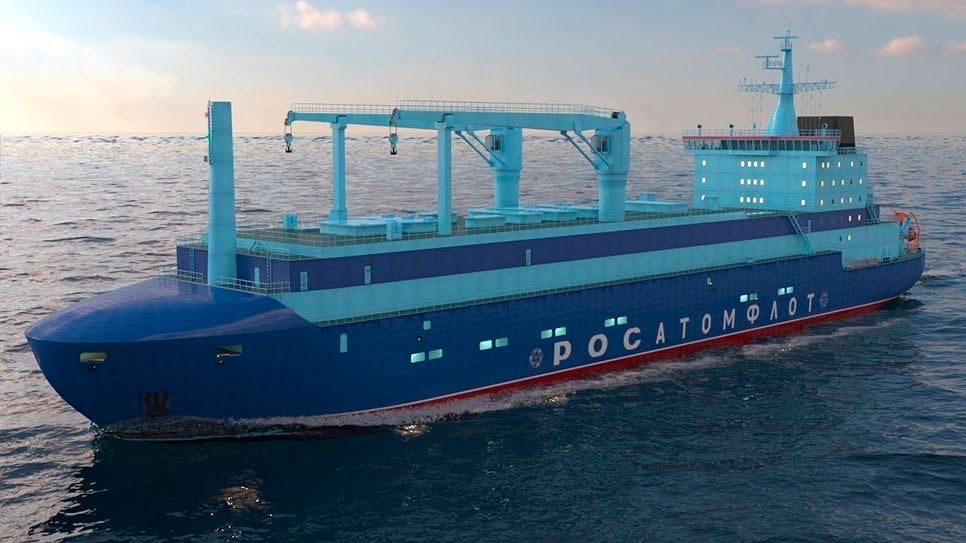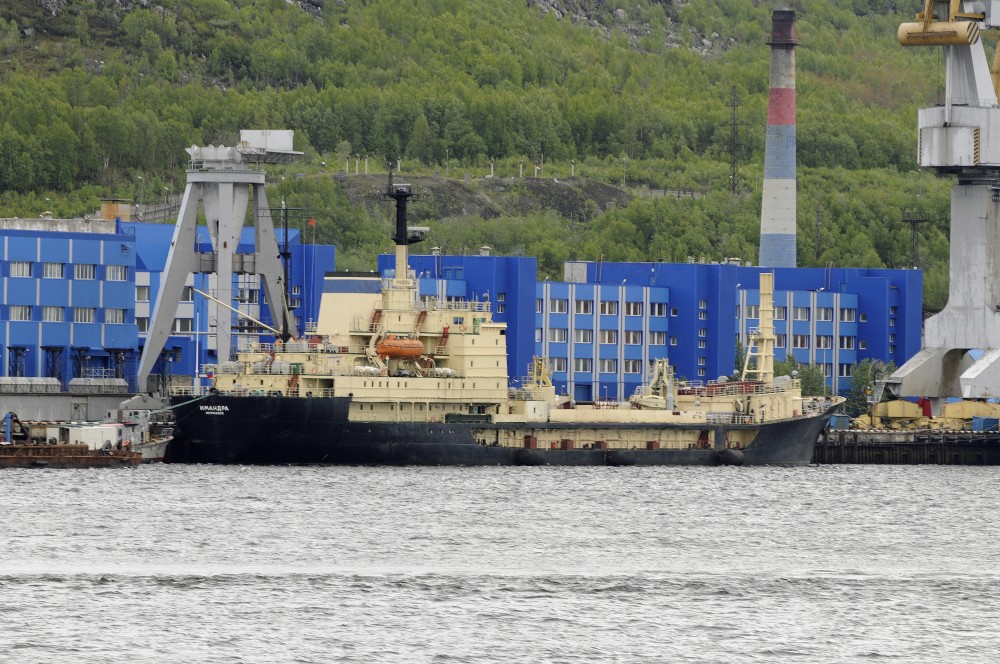Russia’s new storage vessel for spent nuclear fuel is designed for sailing in Arctic sea-ice
Nuclear power company Rosatom signs construction contract with the Baltic Yard in St.Petersburg.

The 158 meter long and 22,661 ton heavy ship will enable Rosatom to replace nuclear fuel at its new fleet of icebreakers, as well as small-scale floating nuclear power plant Akademik Lomonosov.
The multi-purpose vessel will have ice-class Arc5 and be able to operate in harsh Arctic waters. It will replace Imandra, the more than 40 year old ship that today serves Russia’s nuclear-powered icebreakers.
To follow up the Akademik Lomonosov, it will have to sail the more than 4,500 km from Murmansk to the far eastern town of Pevek. That voyage goes through straits and waters covered by sea-ice most of the year.
The new ship will be financed on a 50-50 scheme between the Russian federal government and Rosatom. It is to be ready for sailing in 2029, Deputy Industry and Trade Minister Viktor Yevtukhov says in a comment.
Technical ship design is provided by the Iceberg Central Design Bureau in St. Petersburg. In early 2023, the federal government allocated 12,4 billion rubles to the project.
Russia has over the last few years put three brand new icebreakers of the Project 22220 class into operation. Two more are under construction in St. Petersburg and a sixth vessel recently got funding with a goal to put it into service by 2030.
Each of the new icebreakers is powered with two RITM-200 reactors, a reactor type larger than the older Arktika-class icebreakers.
New reactors require new technologies to reload nuclear fuel elements. The service vessel used by Rosatomflot today, the Imandra, is from 1980 and does not meet the demands of the new icebreaker fleet, larger in size and numbers.
Typically, the uranium fuel is used in icebreaker reactors for 3-4 years before being replaced. The spent fuel elements are then taken out of the reactors and loaded over to special casks to the service vessel where they are stored for a few years before being loaded on land at Atomflot in Murmansk and later transported by train to Mayak in the South Urals for reprocessing.
Located in Kirkenes, Norway, just a few kilometres from the borders to Russia and Finland, the Barents Observer is dedicated to cross-border journalism in Scandinavia, Russia and the wider Arctic.
As a non-profit stock company that is fully owned by its reporters, its editorial decisions are free of regional, national or private-sector influence. It has been a partner to ABJ and its predecessors since 2016.
You can read the original here.
